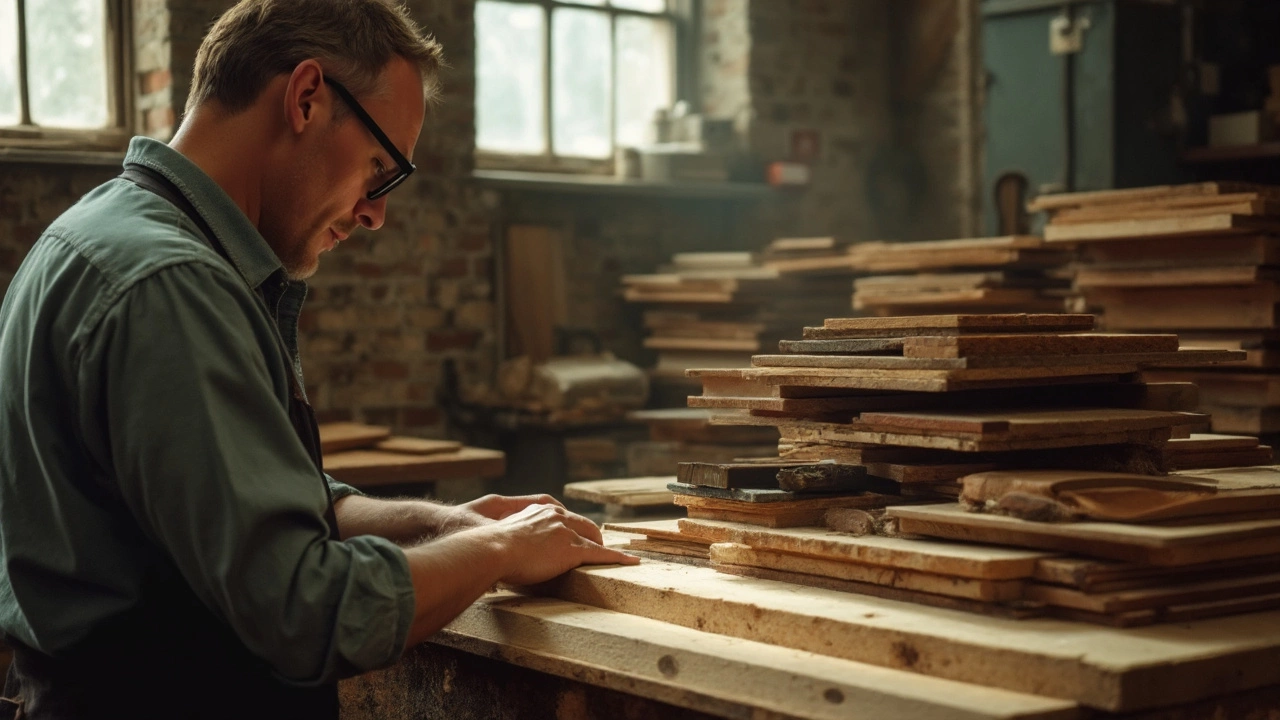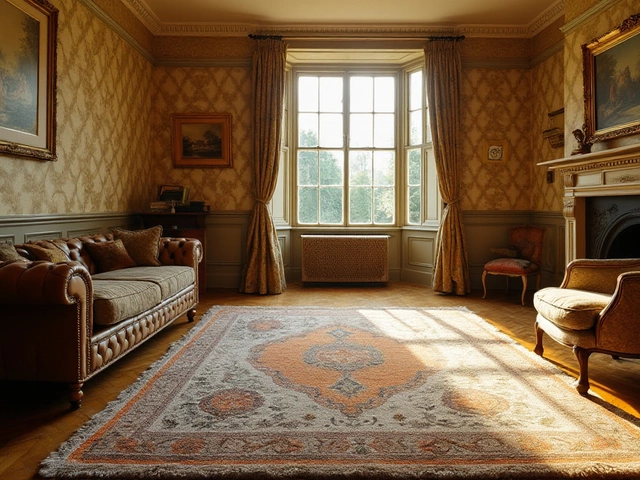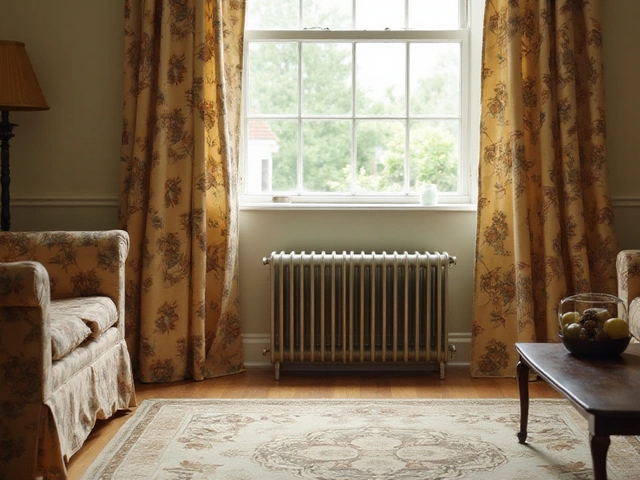If you’ve ever walked into a high-end furniture shop and made a beeline straight for the price tag—heart pounding—you're not alone. Tons of people wonder if that eye-popping price on a fancy couch means it’ll actually outlast the budget ones.
This isn’t just about brands and style. A sofa is serious real estate in your living room, and picking the wrong one stings, especially if it falls apart in a couple of years. So, what really decides how long a couch lasts? Is it all about shelling out big bucks, or are there smarter ways to invest?
The answers go way deeper than just 'expensive equals better.' Let’s look behind the price tags and find out what gives a couch real staying power—plus, how you can make the most of your pick, no matter what you spend.
- What Drives the Cost of Couches?
- The Real Link Between Price and Durability
- Signs of a Long-Lasting Sofa
- Get the Most Out of Any Couch
What Drives the Cost of Couches?
The price of a couch isn’t just pulled out of thin air. There are pretty clear reasons why one sofa might cost a few hundred bucks while another racks up thousands. Let’s break it down to what you’re really paying for—and whether it matters for your home.
Materials make a huge difference. Solid hardwood frames (like oak or maple) cost more than particleboard or softwood. High-resilience foam or feather filling feels better and lasts longer, but costs way more than basic polyester stuffing. Then there’s the upholstery. Real leather is pricey, while synthetic fabrics skew cheaper. Even among fabrics, tightly woven or treated ones stand up to spills and wear much better.
Labor and craftsmanship count for a lot, too. Mass-produced sofas, made on big assembly lines, are cheaper because they’re churned out quickly. Handmade or ‘bench-made’ couches, where a craftsperson pays attention to each detail, come at a premium. The joints matter a ton—kiln-dried frames with double-dowelled and glued joints hold up ages longer than those just stapled together.
Design and brand push prices higher as well. A well-known brand or a trending designer label automatically hikes up the ticket. Sometimes you’re paying for that logo or a certain style, not just quality.
- Solid wood frames (costlier, last longer)
- Denser foam or down fillings (better comfort and shape retention)
- Top-grain leather or treated fabrics (stand up to use and spills)
- Reputable brands or custom designs (built more carefully, pricier label)
It’s easy to see the main factors in one quick glance:
| Factor | Low-End Couches | High-End Couches |
|---|---|---|
| Frame Material | Plywood, particleboard | Solid hardwoods |
| Fillings | Basic foam, polyester | HR foam, feathers, down |
| Upholstery | Synthetics, blends | Leather, performance fabrics |
| Production | Assembly line, staples | Handmade, reinforced joints |
| Brand/Design | Mass brand, minimal styling | Designer, trending |
There’s one more thing: shipping and logistics. Big, bulky items are pricey to move, especially from overseas. That cost shows up in the final price you see at the store. So when you look at price tags, remember, it’s a mix of build, materials, style, and how it got there. Knowing exactly what you’re paying for helps you spot where quality actually lines up with the higher price—and when it doesn’t.
The Real Link Between Price and Durability
Here’s where things get real: just because a couch is expensive doesn’t guarantee it’ll last forever. Pricey sofas usually use top-grade materials, but some of your cash is also going toward the brand name and fancy design. Still, when you pay more, you’re often (though not always) getting sturdier frames, denser foam, and maybe even better craftsmanship. That said, some mid-range couches beat out luxury ones in the durability game if they nail the essentials.
What makes the biggest difference? It comes down to three main things: the frame, the suspension, and the upholstery. Let’s break it down with a quick peek at how these show up in different price brackets:
| Feature | Budget Couch | Mid-Range Couch | Expensive Couch |
|---|---|---|---|
| Frame Material | Pine or particle board (can warp) | Kiln-dried hardwood (like oak or maple) | Solid kiln-dried hardwood with joinery |
| Support | Webbing or basic springs | Sinuous springs | 8-way hand-tied springs |
| Cushion Filling | Low-density foam | High-density foam, some memory foam | High-resilience foam, feathers, or down-mix |
| Upholstery | Basic polyester, bonded leather | Performance fabric, leather-blend | Top-grain leather, premium fibers (wool, linen) |
According to data from the furniture trade group AHFA, a typical budget couch can last 3-5 years before the frame or cushions start to go. Mid-range ones usually see at least 7-10 years, and premium versions can make it to 15 years or more if you treat them right.
But you know what’s wild? Sometimes you’re just paying for looks. If you’re buying an expensive couch with a beautiful but fragile fabric, it might stain or snag faster than a cheaper one with tough textile. It’s always smart to check exactly what’s under the hood—the frame, filling, fabric, and joinery—before trusting that a big price tag means it’ll handle daily life like a champ.
So, does an expensive couch last longer? Usually, yes—but only if the money goes into the stuff that matters. Don’t let a fancy badge or pretty showroom light clue you into thinking it’ll survive your pets, kids, or late-night snacks on its own. Check the construction details and ask questions before you swipe your card.

Signs of a Long-Lasting Sofa
Let’s get real—when you’re sitting at the store, it’s not always obvious which couch is built to last. But if you know what to check, you can spot a sofa that will stick around for years, not months.
First, flip up a seat cushion if you can. Is the frame solid hardwood, like oak or maple, or is it wobbly chipboard? Kiln-dried hardwood frames are the gold standard because they don’t warp or crack easily. If you feel cheap plywood or see lots of knots in the wood, that’s a red flag.
Next up: joints. Good quality sofas use dowels, corner blocks, or metal screws to hold the frame together. If you only see glue or basic nails, that’s a shortcut you don’t want. Ask the salesperson how the frame is built—they should be able to tell you, and if they can’t, move along.
Cushions matter too. High-density foam (at least 1.8 pounds per cubic foot) keeps its shape and comfort. Some premium sofas even add coils or use a mix of down and foam. If the cushions go flat quickly, the sofa just won’t stay comfy, no matter how much you paid.
Fabric choices are a big deal. Top performers are tightly woven, tough fibers like polyester, leather, or certain microfiber blends. These fight off snags, pilling, and stains. Light, loose weaves or delicate natural fabrics will look rough after even a little daily use.
Weight is a sneaky good sign. A heavier sofa usually means a stronger frame and denser foam—cheap, lightweight couches often have hollow frames and low-end fill that breaks down fast.
Here’s a quick comparison of features you can check that really make a difference:
| Feature | What To Look For | Why It Matters |
|---|---|---|
| Frame Material | Kiln-dried hardwood | Prevents warping, lasts longer |
| Joints | Dowelled, screwed, metal fasteners | Less likely to loosen over time |
| Foam Density | At least 1.8 lb/cu ft | Holds shape, more support |
| Upholstery | Tight weave, durable fibers | Resists wear and stains |
| Sofa Weight | Heavier build | Signals better materials overall |
If you see these signs, you’re probably looking at a expensive couch that’ll handle years of movie nights, snacks, and maybe even a couple wrestling matches (speaking from experience—Caleb and I are not gentle on furniture). Don't just trust the price tag—check for these features, and you’ll know for sure if it’s worth the investment.
Get the Most Out of Any Couch
Does it even matter if your couch costs a fortune if you don’t take care of it? Not really. You can stretch the life of any sofa, cheap or pricey, with a little bit of know-how and some basic care. Here’s how to keep your expensive couches (or any couch) looking and feeling good for years.
- Rotate Cushions Regularly: Flip and swap all cushions every couple of weeks. This evens out wear and keeps sagging in check.
- Vacuum Weekly: Crumbs and dust are your sofa’s worst nightmare. Use a hand vac or upholstery tool once a week. This avoids grit working its way deeper into the fibers, which shreds fabric fast.
- Spot Clean Spills Fast: Don't let stains set. Most upholstery likes a little dish soap and warm water dabbed with a clean towel. If you’re unsure, always spot-test first.
- Protect from Sun: Sunlight fades fabric faster than you’d guess. Direct windows? Use curtains or rotate your sofa now and then for even exposure.
- No Jumping: Obvious but true: jumping or roughhousing will wreck springs and foam in no time. Set some house rules if you’ve got kids or rowdy pets.
- Condition Leather: For leather sofas, use a leather conditioner every six months. It prevents cracks and keeps the surface soft.
- Keep Pets in Check: If your pets have claimed the sofa, try washable throws. It saves the main fabric from claws, fur, and slobber.
Want to see just how much regular care pays off? Check out this data comparing average lifespan based on maintenance habits:
| Maintenance Level | Average Sofa Lifespan |
|---|---|
| Minimal (rare cleaning, no cushion rotation) | 3-5 years |
| Basic (weekly vacuum, occasional rotation) | 7-10 years |
| Full (routine vacuum, cushion rotation, sun protection, spot cleaning) | 12-15 years |
So, spending a few extra minutes each week on care really does pay off. Even a higher-end model won’t last if it’s ignored, while a well-loved mid-range couch can surprise you with how long it sticks around. Simple steps make a huge difference, no matter what kind of sofa you’ve got.







